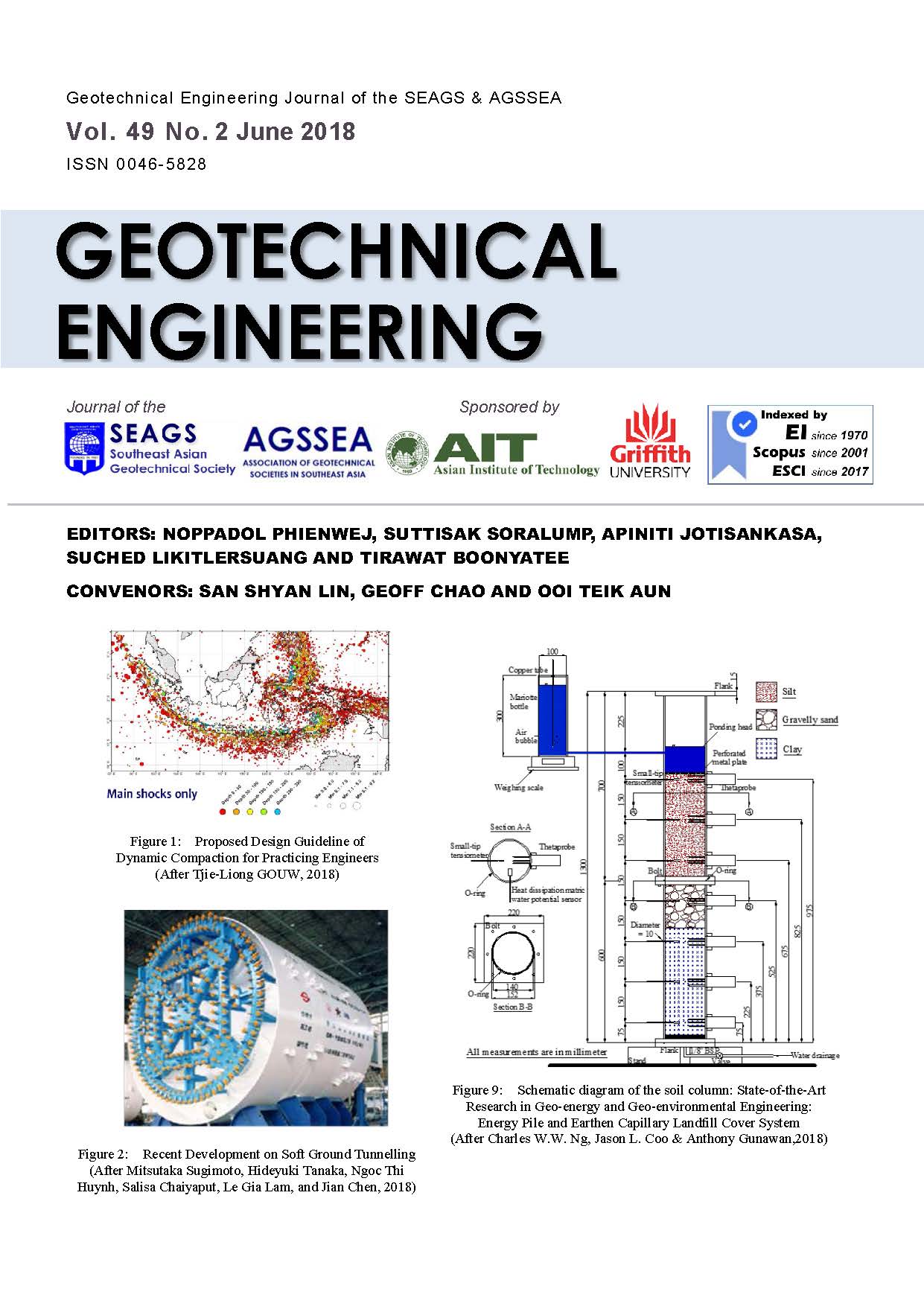Longitudinal and Transverse Interactions between Stacked Parallel Tunnels Constructed using Shield Tunnelling in Residual Soil
Main Article Content
Abstract
In the construction of stacked parallel twin tunnels, the lower tunnel is normally constructed first before the upper tunnel to minimise the impact to the first tunnel due to the construction of the second tunnel. This paper examines the special case in which the upper tunnel was constructed first and undermined subsequently in a parallel configuration during the construction of the lower tunnel using shield tunnelling in residual soil. The longitudinal settlement profile of the upper tunnel due to the undermining by the lower tunnel was studied analytically using Winkler beam solutions, and the results were compared with field measurements through a case history. As the twin tunnels transitioned from a stacked configuration into a skewed configuration, the settlement of the upper tunnel was studied using several common solutions in engineering practice, such as cavity expansion, Gaussian settlement solutions and finite element analyses. The discrepancies between the closed-form solutions and field measurements were found to be largely due to the influence of the lateral earth pressure coefficient, K0<1. According to the finite element analyses, the in-situ stresses with K0<1 had a competing deformation mechanism with the settlements induced by tunnelling volume losses. Comparison was carried out against the conventional tunnelling sequence in which the lower tunnel was constructed first, the results of which revealed deformation magnitudes more than five times smaller, underscoring the need for detailed analyses for tunnelling sequences in which an existing tunnel is undermined. Equations to estimate the subsurface Gaussian trough width parameter from a pair of extensometer readings were derived and presented in the Appendix. Nonetheless, the extensometer measurements were localised and may not be representative of the entire geological formation.
Article Details

This work is licensed under a Creative Commons Attribution-NonCommercial-NoDerivatives 4.0 International License.
Copyright © 2019 Association of Geotechnical Societies in Southeast Asia (AGSSEA) - Southeast Asian Geotechnical Society (SEAGS).


